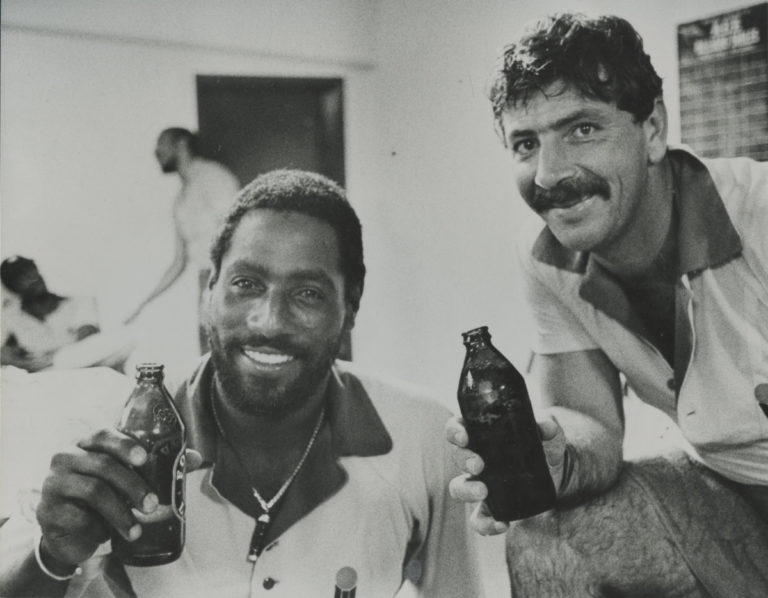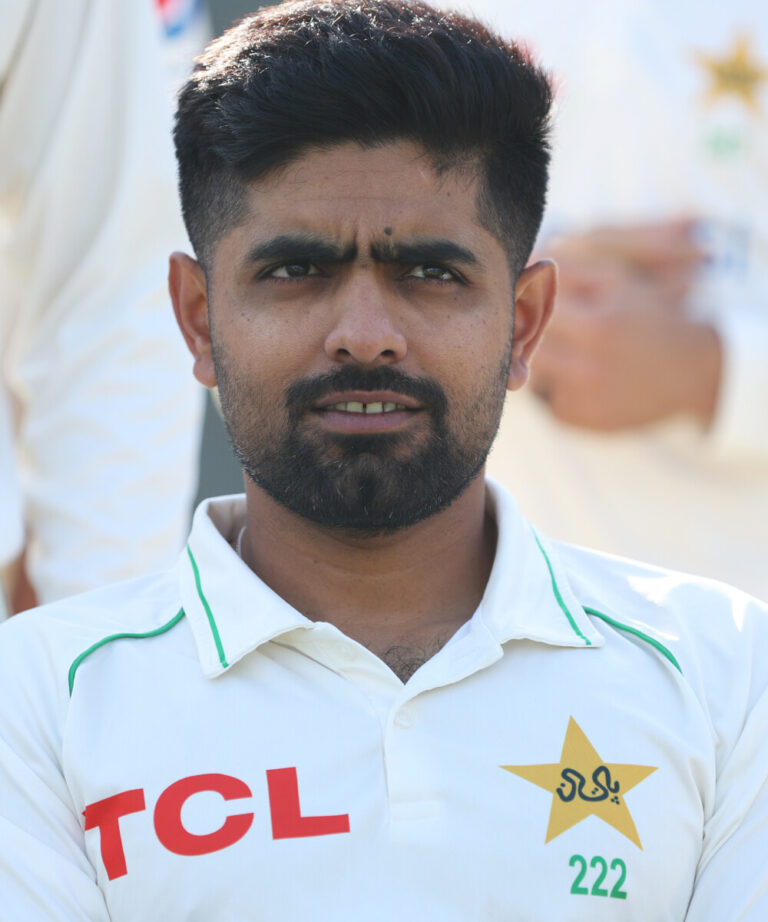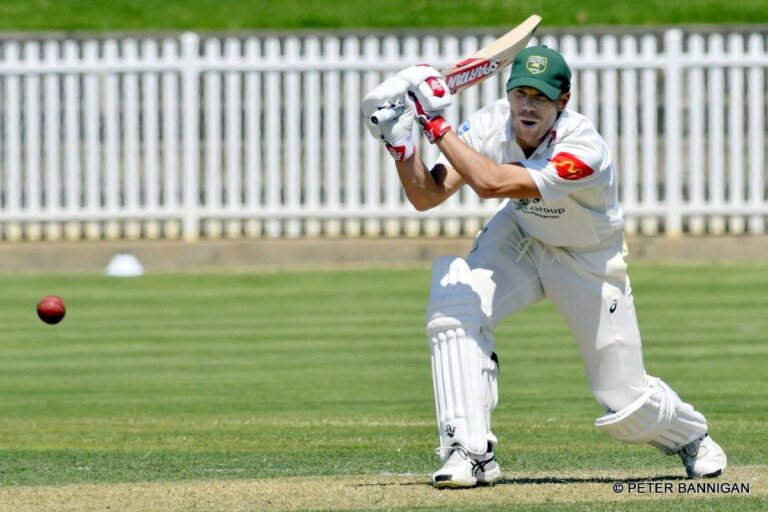
News
JACK POTTER’S BORN LUCKY
A Review by Ken Davis
My first meeting with Jack Potter occurred at Windy Hill when as a 16 year old I was starting my District cricket career with the Bombers. Priding myself at being a reasonably athletic fielder who typically fielded in gully or the covers, I was somewhat taken aback when our captain Ian Monks indicated for me to go to deep point on the boundary as Jack Potter strode to the crease.
I jogged to the position typically reserved for resting fast bowlers or players with limited skill, a little puzzled why the captain thought so little of my fielding. I didn’t have to wait long to find out that was not the case. After a first ball sighter, Potter produced this dazzling square drive which hurtled towards me at deep point, nearly breaking my hand as it crashed into my retreating mitt. I had never seen a shot like it and never since. Mentioning this review to Ian Redpath recently the first thing he said about Jack Potter was his peerless square driving often hit on the up. So I felt ok with Monksy’s decision to send me to what I thought was fielding Siberia.
This book by Jack Potter reveals a man of many talents and interests. A man whose contribution to cricket both as a player,captain, coach, and commentator has been understated. Often mentioned as one of the unluckiest players not to have played a Test he came closer than most by being 12th. man for the Aussies against South Africa at the MCG. Clearly the South Africans did not know about his fielding ability as in a brief time on the field he swooped on the ball at mid wicket to execute a brilliant run out of Eddie Barlow.
Jack was not born into a sporting family although there was a connection to the Coventry name of Collingwood Football club fame. His father had suffered the loss of his first wife and child at birth and when he remarried was not too keen on having more children. However, thankfully for Victorian cricket Jack and a brother were born. In tough times Jack did not enjoy a great relationship with his relatively older father but did go to the footy at Victoria Park and listened to the cricket with his Dad.
Like many of that era backyard cricket contributed a lot to Jack’s early development of his skills. He had an early lesson on the concept of ‘team’ when as a very young player in an U/17 team he decided to go to the Northcote Baths instead of playing cricket, which incurred the wrath of his father. At 12 he joined an U/14 team with his father acting a scorer. As an incentive to Jack his Dad offered him a penny for every run he scored and one pound for every wicket. 202 not out and a hat trick meant that Dad had to fork out nearly a week’s wages.
A significant turning point for Jack occurred when he was awarded a scholarship to join University High school under the guidance of ace recruiter George Murray. At 15 he joined George’s club Fitzroy where the Harvey boys and Bill Jacobs proved wonderful models and mentors for Jack. George also encouraged him to pursue a career in physical education which would later help him become an outstanding captain and coach in cricket.
Jack was a wonderful all round sportsman, excelling in AFL at school and later earned Australian honours in baseball. He was a shrewd tactician as a captain and was known for his ability to take risks often with a mischievous grin and a sparkle in his eyes which could unnerve opposition batters . His man management skills were put to the test when he was appointed captain of Victoria in a year where many young players were introduced to cover the loss of many experienced players to the Test team. Against all odds and driven by Jack’s captaincy acumen the team lost only one game on the way to winning the Shield.
He might have been an all rounder of some renown had he practiced his spin bowling which with an ‘Iverson’ grip could confuse even the best batters. Spin bowling legend Richie Benaud saw something in his bowling and suggested he practice every day but with a full time job he never afforded himself that opportunity and bowled only sparingly throughout his career. A wonderful contrast in how to handle anxious spin bowlers is provided when Jack speaks of his experience with Bob Simpson and Brian Booth.
Selected for an Ashes Tour, Jack saw little action and to make matters worse in pre helmet days he was felled by a bouncer fracturing his skull in a post Ashes match in the Netherlands on a matting surface. Subsequently in all forms of cricket he was peppered with short pitched bowling which no doubt impacted on his confidence and his natural stroke making. Steve Smith is currently undergoing a similar attack after he was hit by Joffra Archer in England on the most recent Tour.
Two chapters stood out to me in this book. The first on the Art of Captaincy was high on my list of topics of interest and it didn’t disappoint. He supported my belief that not all great players became great captains and cites two captains whom he rated highly.
The other intriguing chapter centred on his time as the initial Head of the Cricket Academy in Adelaide where the lack of planning by administrators and shortage of funds made the task a very onerous one albeit one that he enjoyed playing a massive part in the development of future star Test cricketers. The Academy was not universally supported by the States and other influential former players. David Hookes among others even suggesting it was a waste of time and actively discouraged players from attending.
Much like many coaches I suspect, Potter became weighed down by administrators with much less wisdom than himself who wanted to interfere with the program and he eventually resigned after three years at the helm. His influence here is often masked by the work of a more contemporary and perhaps well known coach in Rod Marsh. However Potter with his background in sport science and physical education did the hard yards and established the Academy as a program admired world wide.
Subsequently Jack’s somewhat nomadic nature and risk taking behaviour has seen him running a kiosk in Glenlelg, caravanning around Australia, coaching in the North of England and at Oxford University, coaching cricket with his great mate John Grant, fishing at Mt. Martha and finally he has settled into a quieter lifestyle with his wife Sarah in New Zealand. Throughout the book Jack’s love of fishing shines through as does his ability to recount in vivid detail many interesting and humorous anecdotes along his journey.
This is without doubt a timely reminder of a man who has made a wonderful contribution to cricket and teaching and should never have him seen as ‘understated again. A creative cricket genius in my mind and I thoroughly recommend this book.






